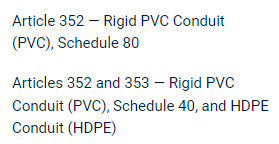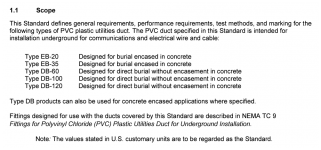- Location
- Lockport, IL
- Occupation
- Semi-Retired Electrical Engineer
I am reviewing a design that shows Sch. 20 PVC in a concrete-encased ductbank. I never encountered Sch. 20 before, and NEC 352 does not address schedule choices. I just learned it exists, but I don't know whether it would handle being encased in concrete. Should I make a comment on this, or is it perfectly OK?


